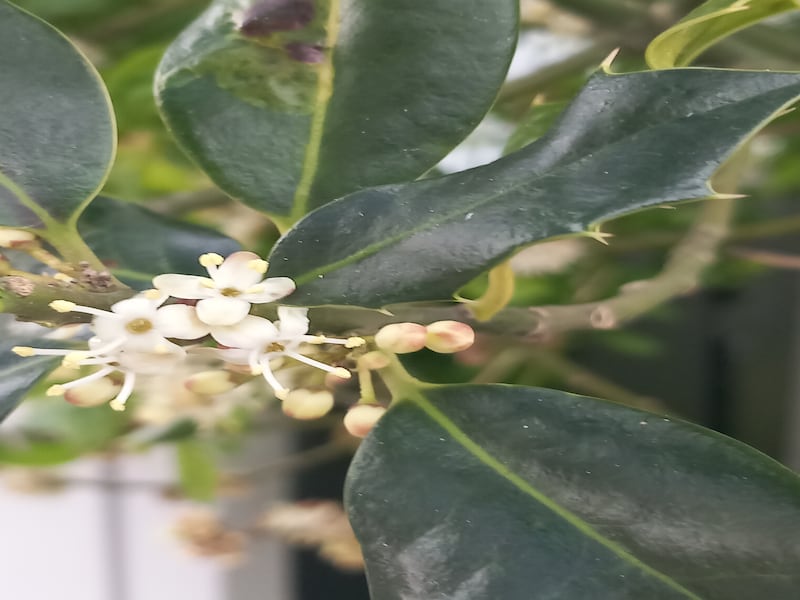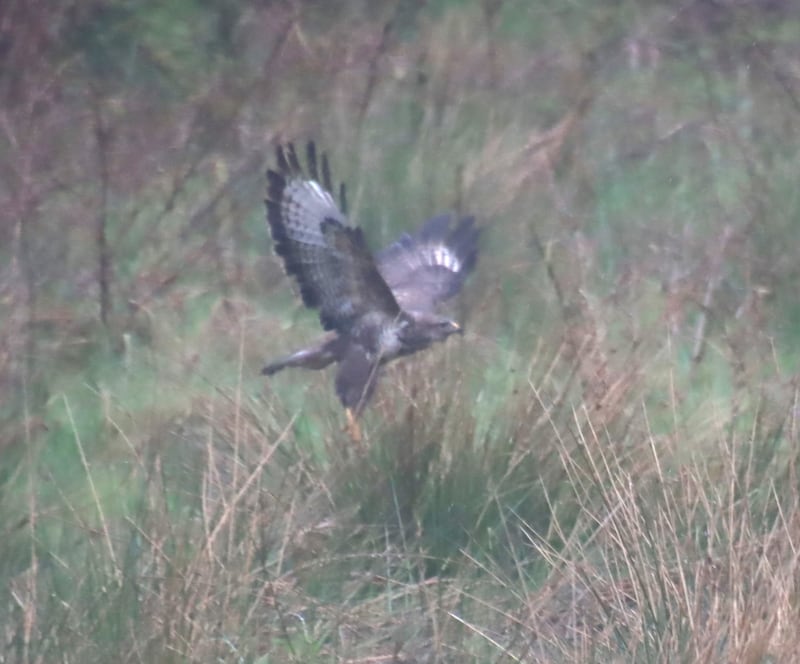I found this little guy when spring cleaning the yard. What is it? Trevor O’Rourke, Co Meath
This is a hawthorn shield bug, its name inspired by the large shields carried by Roman legions long ago. It feeds primarily on the plant juices of hawthorn leaves. Yours has overwintered as an adult and has now emerged to feed and breed. It defends itself from predation by birds by emitting a foul-smelling liquid from glands on its underside, thus earning its alternative name, stink bug.

There are lots of flowers on the holly tree in my garden, as there are every year in the month of May. But there are never any berries at all on it in winter. Why? J Byrne, Dublin
Your holly is a male tree, and these are male flowers. The pollen is in the pale-yellow anthers at the ends of the four stamens carried in each flower. This pollen must meet the female stigma in order to fertilise the ovary below and go on to develop berries. In the case of holly, these female flowers with stigmas and ovaries are borne on separate female trees and the pollen is carried to them by the bees. Your tree fathers the berries on neighbouring female trees but cannot bear any berries itself.
RM Block

I recently found this camouflaged caterpillar on the stem of some young hazel in my garden. Is there any way to confirm what sort of moth/butterfly it will eventually turn into? I’m happy to let it munch away at my young hazel, assuming it doesn’t decimate it. Emmet Folens
It is a looper caterpillar – so called because this group of caterpillars move in an arched, looped fashion as they lack three pairs of prolegs in the middle of the body and only have legs at either end. Dave Allen of Moths Ireland identifies it as the feathered thorn, which feeds at night on a variety of trees, including nibbling at your hazel. Its daytime camouflage is superb – as is your picture. There are more than 300 species of looper moths in Ireland and Britain.

While looking out my livingroom window, I saw the bird in the photo land in an open green space and take to the air after about 30 seconds or so. What species is it? Laurence Speight, Co Fermanagh
This is a buzzard – one of our larger birds of prey. Once a native breeding species, it was persecuted to extinction by the end of the 19th century. Gamekeepers were particularly active in this regard. The reduction in the number of gamekeepers during the 1914-18 war had an immediate effect on buzzard numbers, which could then begin to increase. They slowly spread back to Ireland from their Scottish strongholds, recolonising northern Ulster by the 1950s. The banning of organochlorines and sheep dip pesticides greatly facilitated their spread, and they now occur and breed in every Irish county. They catch and eat small mammals such as rats and rabbits, which your bird was hunting when you took the photograph.

I saw this insect in the garden today. It is unfamiliar to me. Frank Rafter, Co Tipperary
This is the two-banded longhorn beetle, Rhagium bifasciatum, whose larvae feed on the timber of rotting pine stumps for up to two years. It then pupates in the wood and finally emerges as this handsome adult. It doesn’t feed at all as an adult – mating and laying eggs is what it spends all its time at. The eggs are laid into the timber and the whole cycle begins again. It is common enough at this time of year. Anne Cullen has also reported seeing one in Co Kilkenny.
Please submit your nature query, observation, or photo with a location, via irishtimes.com/eyeonnature






















